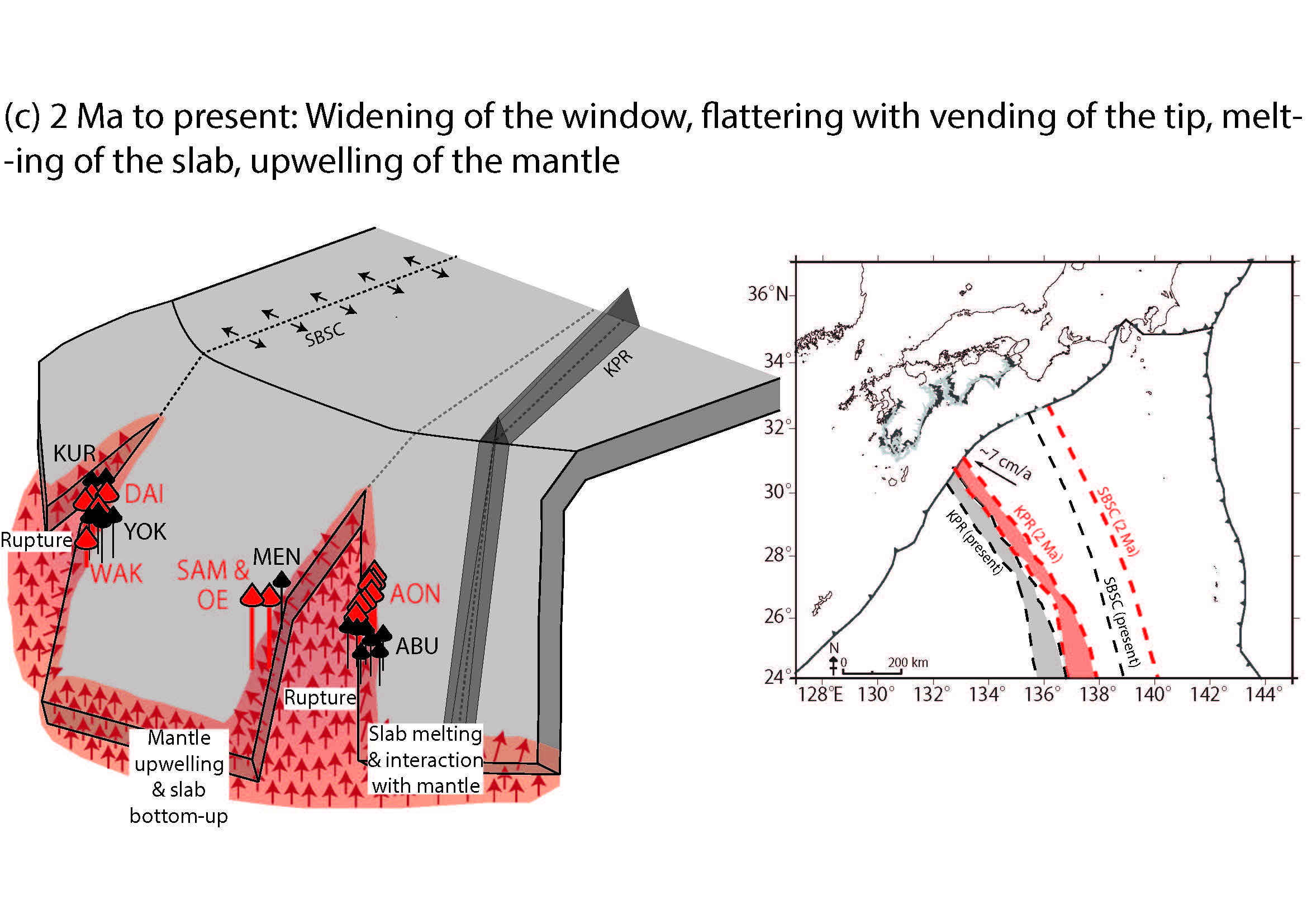New model for adakite genesis have been published in JGR
03/20/2018
In subduction zone, oceanic lithosphere sinks into the mantle and the crustal layer of subducting oceanic lithosphere (slab) progressively metamorphoses with increasing depth. Fluids released from the slab lead to hydration and melting of the overlying mantle and formation of volcanic arcs. When a young (less than 25 Myr) and hot slab subducts, it can partially melt leading to the evolution of magmas of intermediate to felsic compositions. It was noted by some studies a peculiar geochemical characteristics of these magmas such as high-Sr abundance and referred to such magma as adakite, in reference to its first documented occurrence on the island of Adak in the Aleutians. Because adakite is a silicasaturated melt, it is expected to react with peridotite during percolation in the mantle. Such reaction is expected to consume melts and form pyroxenite, and the melts could have little chance of reaching the surface. However, reaction during adiabatic decompression could allow the slab melts to survive in the mantle, and several studies of natural samples have presented evidence to support this idea (e.g., the occurrence of Sr-rich felsic-melt veins in peridotite xenoliths).
We present K-Ar ages, major and trace element concentrations, and Sr-Nd-Pb isotope data for late Cenozoic volcanic rocks from the Chugoku district, southwest Japan arc. Andesite and dacite lavas in this region are enriched in Sr (mostly more than 800 ppm) and show geochemical characteristics of volcanic rocks commonly referred to as “adakite”. K-Ar dating of these lavas revealed that the eruption of high-Sr andesitic to dacitic magmas occurred during the last 2 Myr, following or concurrent with the eruption of basalt in adjacent regions. Trace-element characteristics of high-Sr andesites and dacites are consistent with the formation of their parent magmas by partial melting of the basaltic layer of the subducting Shikoku Basin Plate. Mass balance modeling of trace element concentrations and isotopic compositions suggests that the parental magmas of high-Sr andesites and dacites are best explained by mixing of partial melts from oceanic crust (F = 5–15%) and sediment (F = 30%) at 80:20 to 55:45 ratios. Spatial coincidence of the occurrences of high-Sr andesites and dacites and seismic gaps of the subducting slab demonstrates the causal link between slab melting and mantle upwelling at slab tears. We speculate that these tears could have been formed by subduction of ridges on the plate. A warm mantle upwelled through tears, preventing the solidification of the siliceous slab melts in the mantle and facilitating the transportation of these melts to the surface.

For more details consult this LINK.